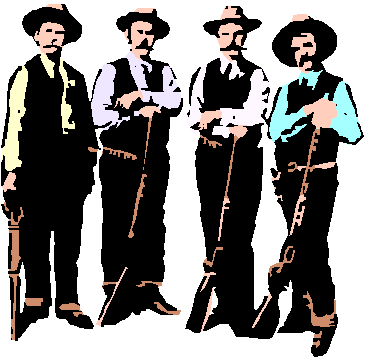
History
of the Guild
In June of 1981, Arthur M. Welling, W. Clayton Jackson, Robert A. Harvey, Michael P. McDunn, and J.C. Thompson signed the original Partnership Agreement to establish the Greenville Woodworkers Guild. These founding fathers had a vision to serve the community by developing an association to promote the art of woodworking, to provide woodworking education, and to perform charitable activities.
At the start, the Guild offered membership at four levels, based on the skills of the applicant – Novice, Amateur, Journeyman, and Master Craftsman. Members were encouraged to improve their skills and apply for the next higher level. The classifications became blurred over time and now the Guild represents a vast array of talent. The Guild has also changed from a partnership to a non-profit, registered charitable organization.
The track record on all three goals is impressive. The professional members of our group have provided leadership in the education of members in the skills of the craft. They did a lot of the initial teaching, supplemented by experts in the field, so that today many of our non-professional members join in this activity. Noted expert craftsmen who have taught our members include Mark Lindquist, Sam Maloof, Frank Klaus, Ian Kirby, Carlyle Lynch, Robert Whitley, Curtis Buchanan, Mark Barr, David Marks, Nick Cook, and Glen Huey. Ever since the inception of the Guild, each meeting has had an educational portion, including speakers and a "show and tell" where members demonstrate their productions and share their experiences. Weekend and nighttime workshops and seminars have supplemented this process.
Art activities have arisen out of our training focus. As a long time member of the Metropolitan Arts Council, we have supported their activities. Early days saw members participate in "Hill Skills" and put on private showings. Today members participate in many art activities and displays, particularly "Art In The Park", where in 1998 the Guild received the best booth award. Our professional members have several showrooms in the city wherein they display outstanding productions of our craft and that of other crafts.
Since the Guild was formed, we have devoted the main effort of our outreach program to the Meyer Center. Because of the diverse skills of our members, we have been able to create and build many unique devices to accommodate the special needs of the children at the Center. Nearly all chairs used in the classrooms are as a result of a prototype developed by Guild members in conjunction with a school therapist, then modified further to adapt to special needs where necessary. Walking bars, special equipment racks, foot supports for bicycle pedals, and numerous other devices have been created and built free of charge to serve the needs of these children. At Christmas, each child receives a wooden toy, compliments of a Guild member. In 1998, the Guild received the J C Penny Golden Rule Award as Group Volunteer of the Year for its efforts at the Center. Of course, members of the group contribute to other groups too numerous to mention in the promotion of charitable endeavors.
The success of the Guild is directly related to the efforts of its members. Three of its professional members have been the nucleus that ensure the Guild’s survival today. Art Welling was a founding father and the first president. While developing his own business of making high-end furniture, he devoted numerous hours to help develop members and generally support Guild activities. Mike McDunn, who operates a fine furniture business, helped the organization and has been the foremost educator of our group. Bob Ripley, another member who has a fine furniture business, has served in various officer positions for more years than any other person. Further, he made his shop available for meetings for a ten-year period and, during that time, provided the education portion of our program on many occasions.
Non-professional standouts include Carlyle McKaughan, George Roberts (deceased 2008), Ravenel Scott, Aubrey Rogers, John Roberts, and Jim Kilton. These people have served the Guild for many years in many officer roles, educating our members, charitable works, and various activities that require routine help to make things happen.
Bob Thomson, another of the early members, is a past-president and served in many other roles. He has been the person responsible for coordination activities at the Meyer Center for nineteen years. In 1999 he decided to move to Virginia and gave his woodworking tools to the Guild. The revenue from this gift has enabled the Guild to reach a new level of service to the community.
Another group contributing to the success of the Guild over the years is the many suppliers of hardware, tools, and lumber. They have provided access to their facilities, education on their products, and donations of time and materials for many of the Guild’s activities. Honorable mention goes to The Tool Shed, Greenville-Spartanburg Hardwood Center, Carolina Refinishing Supplies, Tidewater Lumber & Moulding, Allied Casework Supply (now Richelieu), Carson Nut and Bolt, Klingspor Corporation, Crawford Saw & Tool, Cormark International, Duncan's Hardware, Woodcraft, Woodworker's Supply, Harbor Freight, Woodline, Rockler, Duron Paints, and Wurth Wood Group.
In September 2003, the Guild opened its Education Center, which features a machine room containing a complete array of high-quality tools, an assembly room containing supplies and bins for project storage, a hand-tool room, a library, a classroom, a lathe training room, and a storage area containing hardwoods and plywood for sale to members.
The Guild is self-supporting. The bulk of the funds are internally raised through the payment of dues and fund raising. Dues were at $30 per year until 1998 when they were increased to $40. As of 2008, dues are $75. The Guild has received grants from the Metropolitan Arts Council for special seminars featuring international craftsmen. The Guild set up a web page to further publicize its activities in May, 2000.